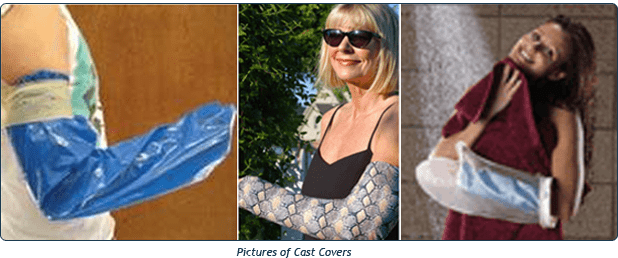Dr. Solberg’s Office Number is 213-455-8448. For a printable version of these instructions click here. This information should be useful after your elbow surgery. Please read this information carefully. You will receive further instructions at your next visit. The following items cover what to expect and what to do for the first week after surgery.

Expect your arm to be quite stiff and sore for the first few days. Try to keep your arm elevated as much as possible. You should begin moving your fingers the first day after surgery.
You have been given a long acting local anesthetic around the incision. It will often last 6-8 and sometimes as long as 12 hours. It may cause part of your hand to be numb after surgery. This will subside when the local anesthetic wears off. This tends to happen very quickly so make sure you take your pain medication regularly and take an extra dose when you begin to feel the anesthetic begin to wear off. When this happens you will feel a tingling sensation in your fingers (this feels similar to when your hand falls asleep after laying on it for a long period of time).
Apply ice to your elbow for the first 48 hours after surgery. You should expect some swelling in your hand and fingers on the affected side as well as some bruising in the forearm, this is perfectly normal. This will subside when you have your splint removed and begin moving your hand and elbow more.
Take your pain medication as directed by your prescription. Do not wait until the pain is intolerable to take the medication. It will take between 30-60 minutes to begin working, so take it accordingly. You may combine your pain medication with an anti-inflammatory medication for a synergistic effect (the effect of the combination is more than each of the separate components).I recommend over the counter Advil or Aleve and these can be taken safely in conjunction with your prescription. If you want to combine you prescription with Advil or Motrin, take 3 tablets (600 mg) three times a day, if you are using Aleve (naproxen) take two tablets (440 mg) twice a day. Make sure you take these medications with food to avoid stomach upset.
Most patients will have a splint on their arm after surgery. This is a partial cast that is made of a kind of “sandwich” of plaster. The skin is wrapped in a soft cotton layer with a strip of hard plaster running down one side of your forearm and up the other. The splint in made to allow some swelling without damaging the skin or tissue around your surgery site. Sometimes there will be a small bloodstain on the bandage especially near your surgical incision. This is normal. The splint is designed to wick blood away from your skin and out to the surface of the cast. Do not get the cast wet, the plaster will soften and the padding will stay wet. This can delay the healing process if it occurs. If you do get the splint damp, take a hair dryer on cool setting and blow it into the wet area. When showering or bathing cover the cast or splint with a plastic bag and make sure the top is sealed with at least 2-3 rubber bands. This will keep water from getting into the cast from above.
There are several companies which manufacture cast covers. These are more form fitting and work better than plastic bags, but also cost more than trash bags. I have included three web sites below that sell covers over the internet.
- www.castcoversnow.com
- www.nextag.com
- www.brokenbeauties.com
Begin to gently move your fingers as soon as you can. Your motion should improve a little bit every day. Start by flexing and extending your fingers gently until all your motion has returned. Then begin on getting your grip strength back by squeezing gently on a soft ball or sponge. Avoid squeezing exercises until the incision has stopped oozing. Below are a set of exercises you can begin doing after you remove the bandage. Do these exercises 2-3 times a day; plan to spend about 10 minutes each time you do the exercise. Make sure you take some pain medication before you do the exercise as they may cause more irritation.
Call Dr. Solberg’s Office if you notice any of the following symptoms.
You may be connected with an associate if you are calling in the evening hours. Have your discharge orders and description of your procedure available.
- Temperature over 1010 Fahrenheit
- Persistent numbness in your hand
- Increasing, severe pain in the hand
- Increasing redness around the incisions
You have been prescribed pain medication which has a number of side effects. Most common are drowsiness, nausea and or vomiting, itching, constipation and irritability. If these are prolonged or severe, your pain medication may need to be changed. You must contact our office during business hours to have a prescription refilled or a new prescription dispensed. After hours (after 5:00 pm or weekends), the on call doctor will not give you a refill or a new pain medication prescription.
